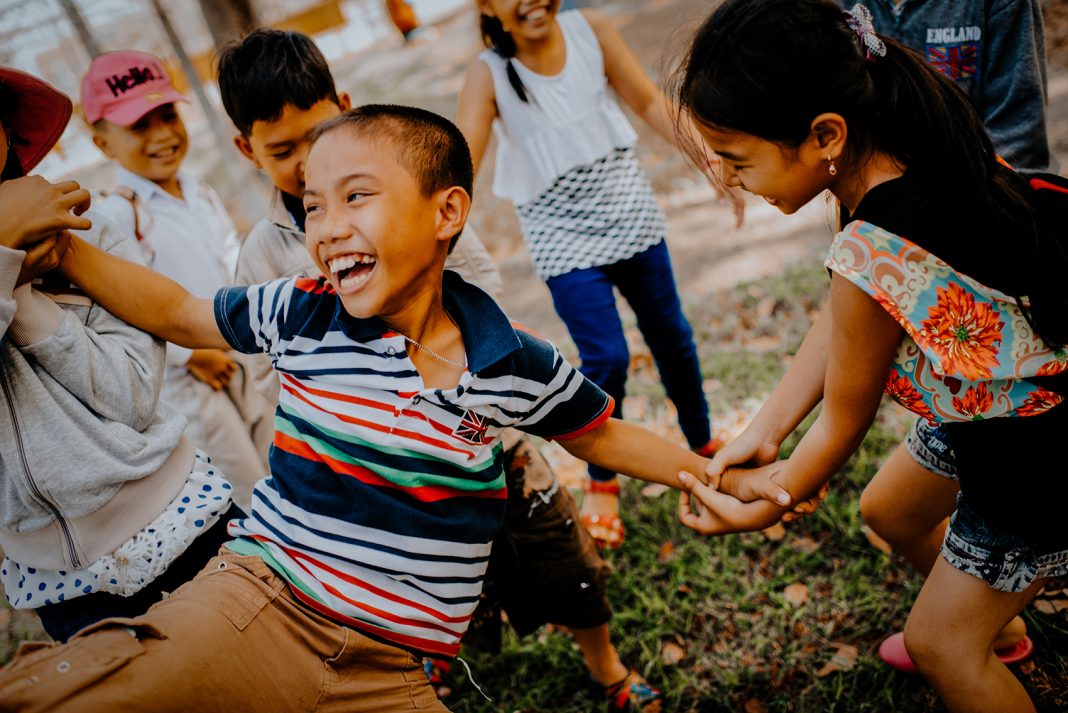When was the last time you saw children playing on the streets of your neighbourhood or heard their carefree, joyful laughter? Probably a long time ago. We seem to live in a society where cars are prioritized above all other forms of transport and, as it happens, of people. Metamorphosis set out to change that, starting at the very beginning – with the youngest.
Metamorphosis’ idea stems from a belief that if a neighbourhood has many children on its public surfaces, it indicates a well-designed and sustainable neighbourhood. The project’s vision is simple- transform car-oriented neighbourhoods into children-friendly ones with the help of children’s perspectives, and simultaneously increase the quality of life for all residents. Pretty straight forward, albeit a very ambitious project; you wouldn’t be wrong by wondering how?
How and Why Metamorphosis Became a Success
As mentioned, Metamorphosis is all about transforming neighbourhoods, specifically focusing on children. The project lasted over 3 years (from 2017 to 2020) and was mainly funded by the EU Horizon programme with an amount of €2,950,005 (total cost was €3,413,923). Among the first cities to carry out Metamorphosis were Graz (Austria), Merano (Italy), Tilburg (Netherlands), Southampton (United Kingdom), Zurich (Switzerland), Munich (Germany) and Alba Iulia (Romania), with each city involving four different neighbourhoods varying in size, structure, density and diversity.
Metamorphosis Set Out With a Mission
- Transform cities, develop and implement children-friendly mobility solutions,
- build visions of this transformation in the community and among relevant stakeholders,
- develop and implement innovations that would enable the project to continue from city to city and country to country, even after the completion of the project.
To achieve these goals, Metamorphosis used one very unique approach:
Including Children!
Since Metamorphosis is a project about and for children, it made sense for the project managers to include the voices of the most important element in this equation. According to its objective, children were given a prominent role as investigators, coordinators, motivators and advertisers. They were strongly empowered to monitor and evaluate neighbourhood level activities and were most importantly included in vision building workshops.
Why Children?
Children are perfect mediators for changes in the community, as they can influence their parents’ emotions, who will hardly go against the needs and demands of their child.
“The key to success was the involvement of children because it made the reallocation of street space not only a rational matter but also an emotional one,”
remarks Anna Solderer, one of Metamorphosis’ project managers, on the key successes of the project.
Even more, children were involved in the vision building process as much as possible, as this enabled project managers to integrate innovative ideas into their implementations and measures. As part of this process, each partner city carried out at least one vision building workshop, alongside testing and engaging activities for public spaces, from organizing bicycle training to creating children-friendly neighbourhood maps – see here for a full list and descriptions.
Children were given a voice within vision building workshops, during which sustainable ideas emerged with the children’s help. By being able to talk about what they want and need, children affirmed their wishes for safer, greener and more walkable neighbourhoods.
“In general, children should be considered as key actors to build sustainable cities and were for this reason directly involved in each phase of the project,”
continues Anna, according to whom cooperation with institutions that work with children (e.g. schools) was also an important part, as such organizations “have [already] established procedures in terms of ethics.”
Drivers of Change
Anna says “children are drivers of change” but points out that it’s important to involve residents of all ages in sustainable urban design to “make public space fit for the future generations.”
Transforming car-oriented neighbourhoods into children-friendly ones and increasing the quality of living for everyone in the neighbourhoods – that was the goal! As for the achievement … Through carrying out various workshops and events, Metamorphosis managed to distribute space more equally for all forms of transport and improved conditions for children.
Some of the many measurable impacts in the seven implementing cities were a 50% increase of children in public spaces, a 40% increase of pedestrians, a reduction of car trips for transporting children by 40% and a reduction of car trips for daily goods shopping by up to 50%.
“More than 30,000 people co-designed and participated in activities, and over 150,000 citizens were directly affected. These activities have opened many people’s eyes and led them to question the current machine-dominated use of public space,” reports Anna.
Impacts were seen not only on infrastructural levels but on behavioural as well: social relations in the neighbourhood, in the form of neighbourly visits, for instance, have increased by 50%. The projects managers even noted the creations of new jobs and securing of employment in the neighbourhood – an outcome they didn’t expect.

Metamorphosis Lives On
In addition, project partners have developed 70 fact sheets with descriptions of each project activity, including the required human and financial resources to successfully pull it off. You can find all of the available sheets here.
Key Takeaway
Metamorphosis put a new spin on sustainable urbanization. It has tested, proved and shown that all generations need to be included when driving change in cities. Children are the backbone of our generation, and it’s time we start listening to their ideas, needs and wishes- in the long run, it will benefit us all.
Click here to find out more about why it’s important to design cities for children, and check out our article about the remarkable journey of CityChanger Clare Roger creating child-friendly streets.


